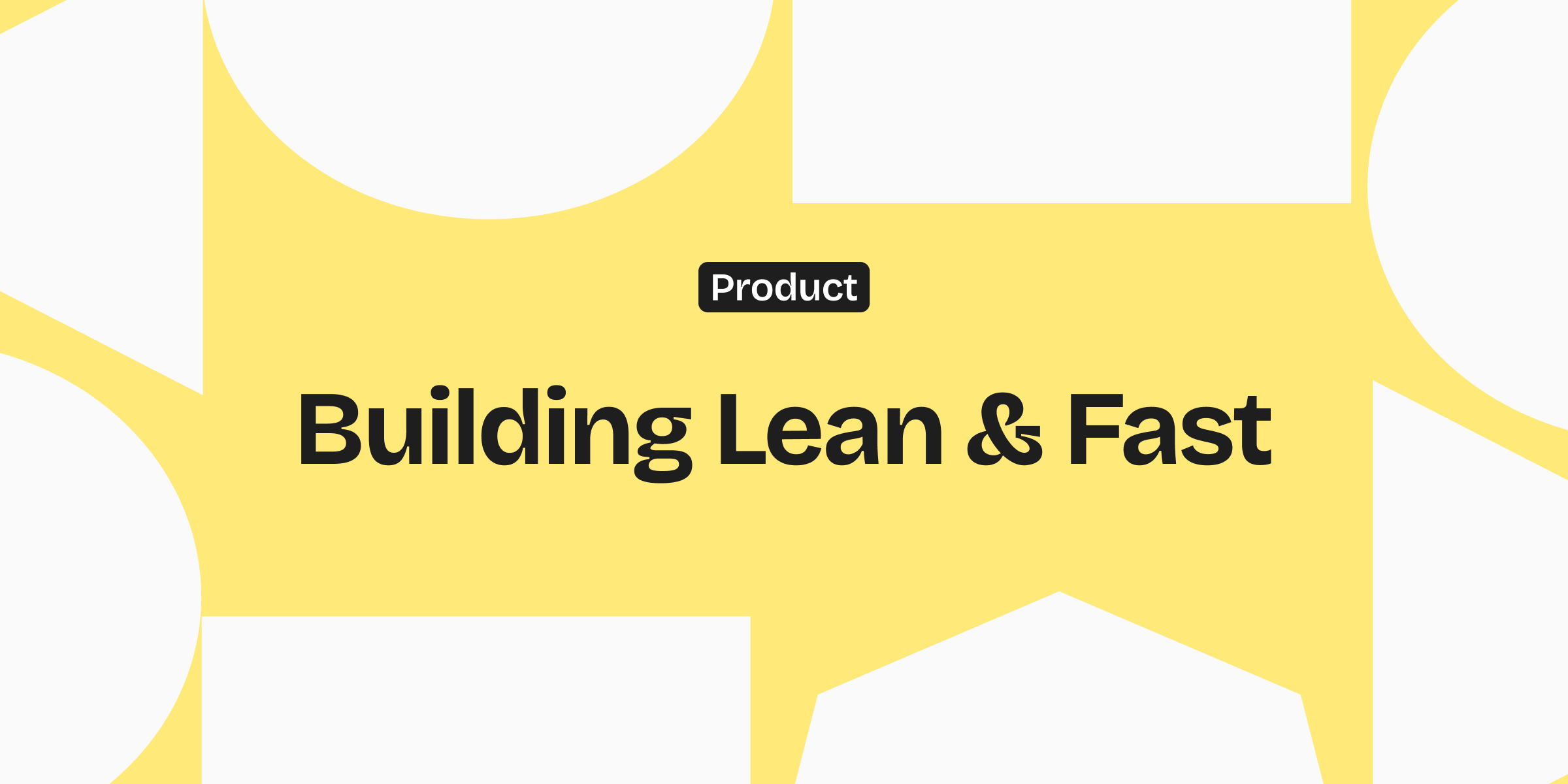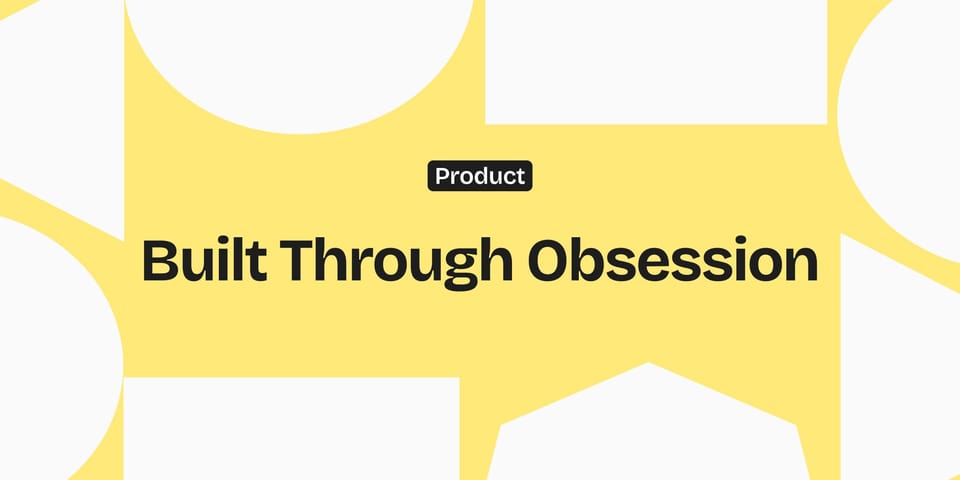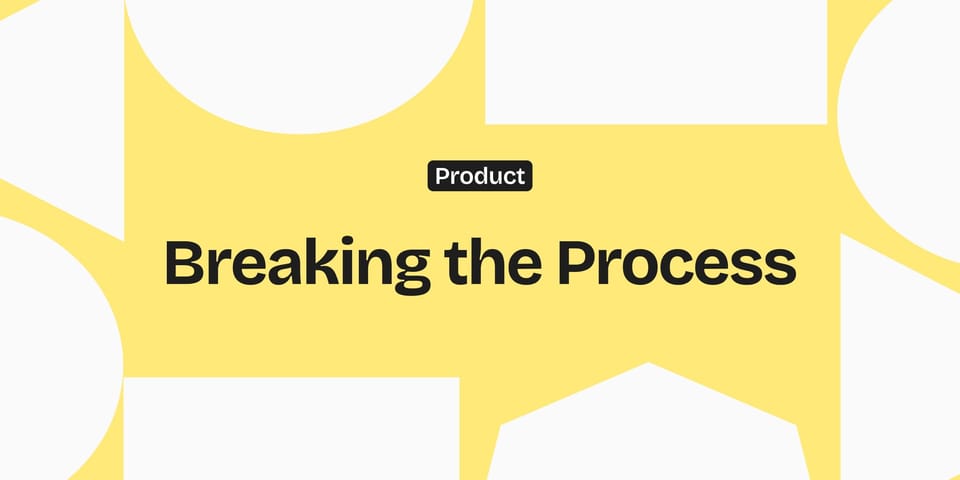Running Lean and Building Faster
Most startups don’t fail because they couldn’t build. They fail because they built too much, too early, and in the wrong direction. This is how I learned to stay lean, move fast, and build only what real user behavior actually justifies.

Most startups don't fail because they couldn't build. They fail because they built too much, too soon, in the wrong direction.
Over the years of running multiple companies, I've learned that success comes not from scale, but from clarity. We've made every mistake in the book: overbuilding, overhiring, and overplanning. The turning point was embracing lean principles and building around what users actually do, not what we think they want.
Lean thinking is now how I operate every company I run. It's not just about saving time or cost. It's about moving with speed, staying sharp, and always staying grounded in user reality.
Why Startups Overbuild
Startups are built on optimism. That's a strength in the early days, but it becomes a liability if left unchecked. The belief that more features equals more value is seductive. So is the idea that a big team or a detailed roadmap will help you look more credible.
But this mindset leads to inertia:
- Features multiply before the core is validated
- Hiring happens ahead of need
- Long-term plans are made without short-term learning
I've seen this slow companies down more than any market condition. We've hired full teams expecting rapid user growth, only to find the product wasn't ready. We've staffed marketing functions before retention stabilized. In each case, we ended up correcting course - but the cost of that correction was time, energy, and morale.
The answer isn't to move cautiously. It's to move smart. That starts with being lean by default.
What Running Lean Really Means
It's easy to talk about being lean. It's harder to live it, especially when pressure builds to look "successful." But in practice, running lean is a system of habits:
1. Build for Behavior, Not Belief
Everyone has a product intuition, but users often surprise you. We've built beautiful dashboards no one clicked. We've added clever onboarding flows that confused users. Meanwhile, a barebones feature request from users sometimes turned into a growth engine.
The only truth is what people do, not what they say or what you assume.
2. Shorten Your Learning Loop
Our work runs in tight 1 or 2 week sprints. But the point isn't speed, it's feedback. We focus on what we can test, not what we can polish.
What gets shipped must get feedback, and what gets feedback must be used to decide what to build next. That loop is the heartbeat of a lean company.
3. Kill What Doesn't Work
One of the most difficult things is stopping work that has emotional or time investment behind it. We've cut entire features, integrations, and even product lines when usage didn't follow. We learned to ask: would we build this today, knowing what we now know?
If the answer is no, we kill it.
4. Monetize Early (Even If It's Uncomfortable)
A lot of founders delay monetization because they want to get everything "just right." But revenue is not just money, it's validation.
We now test monetization in Month 1. Even if it's just a landing page or a basic paid tier. It helps us know whether we're solving something painful enough to pay for.
5. Hire Slowly, Let Go Quickly (With Care)
We hire when something breaks repeatedly without that person. Not when we want to move faster. Not to look bigger. Only when the system can't scale without them.
And if someone doesn't fit - whether it's skill, pace, or mindset - we move fast. But we do it clearly and respectfully. The cost of misalignment is higher than the discomfort of a tough conversation.
6. Automate Before You Scale
Manual processes are fine in the early days. But as soon as a pattern emerges, we automate. Whether it's reporting, alerts, or onboarding, we aim to build systems that remove repeat effort.
Automation is a multiplier for lean teams.
Real Speed Comes from Restraint
It's counterintuitive, but a smaller team with sharper focus almost always moves faster than a larger one.
I've seen three-person teams with tight loops and clear goals outperform entire departments. The difference isn't talent - it's clarity, trust, and lack of drag.
A lean team doesn't have to wait for approvals, meetings, or syncs. They're in flow. They build, measure, learn - and repeat.
The Emotional Cost of Overbuilding
What's often overlooked is the mental toll of building the wrong thing. When you overinvest in a feature no one uses, it doesn't just hurt metrics - it kills morale.
Teams lose energy. Founders lose conviction. And companies lose momentum.
By staying lean, we preserve optionality. We stay optimistic, but rooted in reality. And we stay flexible enough to respond when things change - because they always do.
Staying Lean As You Scale
Lean isn't just for early-stage. The biggest trap is thinking size justifies complexity. In fact, as you grow, staying lean gets harder - and more important.
As new people join, you need tighter communication. As new features ship, you need stronger validation. As revenue grows, you need clearer priorities.
I've learned to ask these questions regularly:
- What are we doing that no longer adds value?
- Where are we making assumptions without testing?
- What would we stop doing if we had to cut 50% of our resources?
This isn't just a thought exercise. It's a way to stay honest.
Final Thoughts
Running lean doesn't mean moving slow, being cheap, or playing safe. It means:
- Building only what users need
- Learning faster than your competitors
- Scaling with intention, not ego
Most importantly, it means protecting your most valuable resources - time, focus, and energy.




